Lucie Fremlová: Roma in the Ukraine in the context of war, annexation and historic oppression
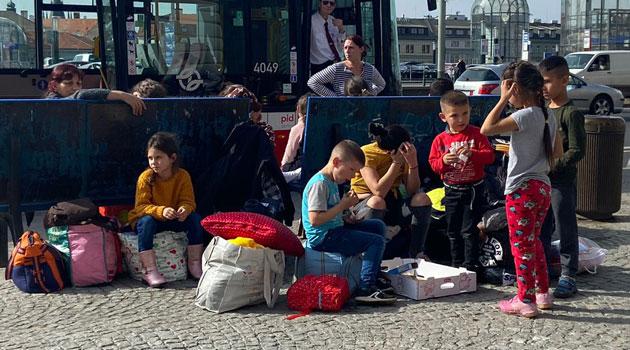
Ukraine’s largest Romani community are the Servos (Servitka, Servuja) or east bank Roma, who sometimes call themselves ‘Ukrainian Roma’ and whose dialect is closely tied with the Ukrainian language.
Ukraine’s largest Romani community are the Servos (Servitka, Servuja) or east bank Roma, who sometimes call themselves ‘Ukrainian Roma’ and whose dialect is closely tied with the Ukrainian language.
Members of Servo Roma communities have a long history in the region, with the earliest mention of a Roma presence in Ukraine dating back to the 15th century. At the time, most of modern Ukraine’s territory formed part of the Grand Lithuanian Duchy. The traditional crafts of Roma, such as blacksmithing and barter trade, enjoyed considerable local demand: groups of Roma would migrate from village to village during the summer months and spend their winters hosted by locals in their homes.
Diversity in the face of exclusion, slavery and discrimination
Ukraine’s largest Romani community are the Servos (Servitka, Servuja) or east bank Roma, who sometimes call themselves ‘Ukrainian Roma’ and whose dialect is closely tied with the Ukrainian language.
At the end of the 16th century, when these territories came under control of the Polish crown in the Polish-Lithuanian Commonwealth the authorities ordered the expulsion of Roma from the Duchy. Many Roma from northwest Ukraine, particularly the Carpathian region, were forced to relocate to the scarcely populated steppes in what is the southeast of modern Ukraine. Between the 15th and 17th centuries, this area also hosted numerous disenfranchised Ukrainian villagers and gave birth to Zaporizhzhia Sich – the cradle of Ukrainian national identity.
The prospect of freedom offered by these lands also attracted Roma from elsewhere, escaping slavery in the principalities of Wallachia and Moldavia (present-day Romania and Moldova). These were the ancestors of the modern sub-ethnic group known as Vlax (Vlahurja), whose dialect of Romani is also regarded as ‘Ukrainian’ due to the strong influence of the Ukrainian language on its development.
At around the same time as in mainland Ukraine, a Roma community began to develop in Crimea. In the lands of the Crimean Khanate, Roma predominantly lived among the local Crimean Tatar population.
Tatar Chingine’, as locals called them, were Muslims – like most of the Crimean population until the 2nd half of the 20th century – and depended on traditional crafts such as veterinary care, metal working and music. Although Tatar Chingine were ethnically distinct to the Crimean Tatar majority, their status was not very different from the ‘autochthonous’ or indigenous Muslim population and they were closely integrated into local communities – to the point that by the 19th century, most had forgotten the Romani language and spoke Crimean Tatar.
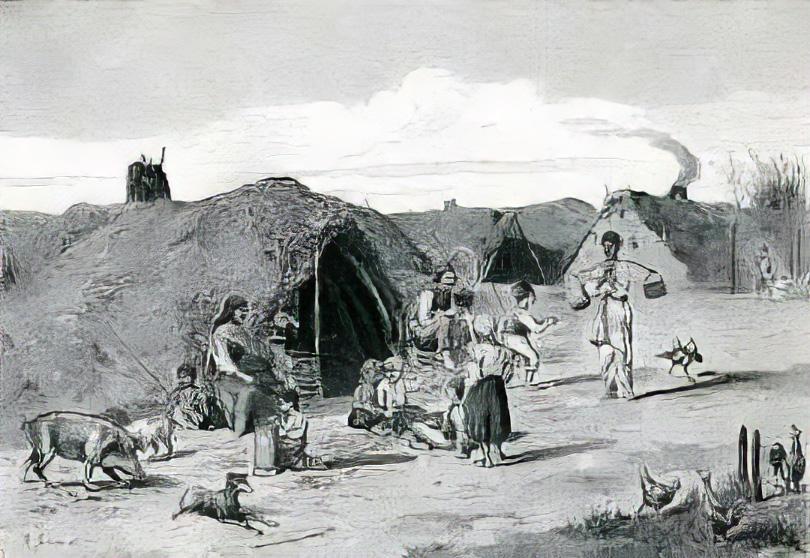
With the expansion of the Russian Empire to the north coast of the Black Sea and the region then known as Bessarabia, many new and distinct groups of Roma came under its rule. Historians suggest that the expulsion of Tatars and other Muslims by the Russian rulers of these lands forced many Muslim Roma to relocate to Crimea, where Islam was still widely practised by most of the population. Today, the ancestors of these displaced Muslim Roma call themselves ‘Kyrymlytica Roma’, ‘Kryms’ or ‘Krymuria’, signifying their links with the Crimean Peninsula.
Due to more recent historical events, particularly the annexation of Crimea by Russia in 2014, they are now scattered all over Ukraine and can also be found in Odesa, Kherson, Donetsk, Vinnytsia, Zhytomyr and Kyiv. Their dialect of Romani, which is the only one in Ukraine classified as a member of the so-called ‘Balkan group’ of Romani dialects, bears alongside strong Balkan and Romanian influences significant evidence of Crimean Tatar. The majority of Kyrymlytica Roma still practise Islam.
The jurisdiction of the Russian Empire also extended to many Christian Roma, who for centuries had been enslaved by Romanian landlords, Greek and Romanian Orthodox monasteries in Bessarabia and even other, more privileged Roma community members: according to Romanian law, they were regarded as the property of the state. However, the Russian authorities allowed Romanian landlords and monasteries to continue exploiting Roma as their slaves. In order to ‘regulate’ the status of itinerant Roma who were ‘owned’ by the state institutions, Russian authorities also attempted to settle them on state-owned lands. These policies underline the history of the villages of Kairo (now Kryva Balka) and Faraonivka in Odesa region, where Roma communities still reside. Yet these attempts at sedentarisation were largely unsuccessful as many travellers feared that it would lock them into servitude.
The situation of Roma in the territory of western Ukraine, at that time under the rule of the Habsburg monarchy, was not much better. In the lands of modern-day Zakarpattia, Roma were subject to strict sedentarisation and assimilation policies under Maria Teresa (1740 – 80). Beginning with the mandatory settlement of all Roma by local authorities at the places where they were identified, subsequent decrees prohibited Roma from wearing their traditional clothes, authorities from issuing passports to Roma and ordered Roma to be called ‘new Hungarians’ or ‘new peasants’. Soon authorities prohibited Roma from speaking Romani. Roma children were to be removed from their families and placed in the ‘foster care’ of peasants to ensure a ‘Hungarian upbringing’. Because of these policies, a large number of Roma in modern Zakarpattia are no longer able to speak Romani: many speak Hungarian as their mother tongue and even self-identify as Hungarians, despite continuing to live in segregation.
In the lands of what is now Chernivtsi region, Austrian authorities initially preserved the practice of Roma slavery that had existed there since the area was under the control of the Principality of Moldavia. Though in 1783 the Habsburgs officially abolished slavery, the resistance of many Romanian monasteries and landlords to the decree meant that in practice Roma in this area – known as Bukovynian Roma – had no access to land and most were forced to remain working at the estates of their former ‘owners’ to survive. In the mid-1850s, the Danubian Principalities of Moldova and Wallachia formally liberated all Roma slaves, though the owners had a right to ‘compensation’ from the taxes payed by their former slaves. The authorities subsequently embarked on an aggressive strategy to forcibly assimilate Roma, including dispersed settlement across Romania, compulsory education and prohibition of the use of Romani. This resulted in the mass displacement of Romanian Roma, Kalderari (Kalderash), Ursari and other ethno-social subgroups, some of whom ventured eastwards into the territory of modern-day Ukraine.
Persecution of Roma during WW1 and WW2
Industrialisation, World War I and the social unrest, revolution and civil war that emerged in its wake triggered a wave of mass migration throughout Eastern Europe, including of Roma.
The artificially orchestrated famines of 1921 and 1932-1933 that killed millions of Ukrainians encouraged many Roma to escape the famine-affected villages and resettle in larger cities, saving some from starvation, though many of these fugitives were subsequently caught by Soviet authorities and deported to Siberia.
To escape persecution, many sedentary Roma in Ukraine left their homes and returned to their previous nomadic lifestyles. As nomadism was associated with poverty and proletarianism, this may have saved some Roma from repression during the brutal process of ‘collectivisation’.
The new economic and political order built by the Soviets undermined and even criminalized many traditional Roma trades, leaving them little means of subsistence.
At the same time, the new economic and political order built by the Soviets undermined and even criminalized many traditional Roma trades, leaving them little means of subsistence. Authorities forced people, Roma as well as other Ukrainians, into collective farms by depriving them of passports, barring their access to liquid cash and imposing a strictly regulated system in the cities to control migration. It was also prohibited to own horses. By the 1930s, itinerants were likely to be arrested for ‘vagrancy’, ‘counterrevolution’, ‘spying’ or other charges.
During World War II, the entire area of Ukraine was occupied by Nazi Germany and its allies. From the 2nd half of 1941, extermination squads sporadically killed Roma travellers and by the spring of 1942 the systematic murder of Roma in Nazi-occupied territories began. Itinerant groups were targeted first, with Roma ordered to present themselves for ‘resettlement’, on pain of death.
Thousands of Roma throughout Ukraine complied, believing they would be resettled: instead, everyone who appeared was brutally slaughtered. In autumn 1942 Nazis, aided by the local police, set out to identify the surviving Roma for extermination. Mass atrocities continued, with both itinerant and settled Roma targeted. The latter in particular were barely distinguishable from their non-Roma neighbours, but police and local officials helped the Germans to identify the victims. For many Ukrainian Roma who managed to avoid the mass executions of 1942, the only option was to go into hiding in the woods. Some survived thanks to the protection of other Ukrainians.
A different, but no less tragic, fate befell Roma in the southwest of Ukraine. The lands between the rivers of Dniester and South Bug (in what is now the territory of Odesa region and part of Mykolaiv region in Ukraine), dubbed by Romanian authorities as Transnistria were designated as a site for the ‘deportation’ of Jews and Roma from Romanian territory, including Bessarabia and Bukovina.
Between June 1942 and December 1943, the Antonescu regime deported approximately 25,000 Roma to Transnistria. The deportees were ‘settled’ in village houses from which their Ukrainian owners had just been expelled, with no warm clothes or other possessions, no access to food or fuel, and no gainful employment opportunities in exile. Escaping north or crossing the South Bug meant a likely death at the hands of the German authorities, who controlled the surrounding territory. Some managed to escape back to Romania, Bukovina and Bessarabia, though many of these runaways were caught and returned to Transnistria.
While there is no evidence to suggest that Romanian authorities specifically orchestrated mass executions of Roma in Transnistria, the records show that there were instances when gendarmes shot the exiles for transgressing the rules of ‘settlement’, as in Tryhaty (Ochakiv district of Odesa region) in May 1943, when police shot a group of Roma who had arrived from neighbouring villages in search of work. Ultimately, thousands of those deported to Transnistria died of starvation, cold and disease. The exact number of Roma who perished at the hands of the Antonescu regime in southwest Ukraine is unknown.
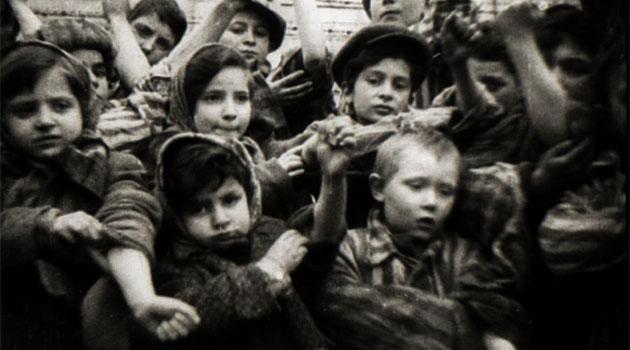
In March 1944, when the deportees were allowed to return home, the number of survivors was around 14,000 people: this means that at least 11,000 Roma deportees must have perished in Transnistria. Not all Romanian Roma were able to return to their homes, with several thousand stranded behind the front line of the advancing Red Army. Some were repatriated after the war, with others scattered across Ukraine. Approximately 15,000 Roma were based in Zakarpattia, including some sedentary and some itinerant Roma from Hungary and Slovakia.
In 1941, the Hungarian government in control of the region curtailed the mobility of Roma and exploited their labour, confining Roma to ghettoes and imposing a range of restrictions, including prohibiting marriages between Roma and ethnic Hungarians. Yet until 1944, when the German military took effective control over Hungary, no deportations or killings took place. Between April and June 1944, tens of thousands of Zakarpattia Jews were deported to the Auschwitz concentration camp. Roma would have followed if the Red Army had not subsequently taken control of Zakarpattia later that year. Many Roma in the west of Hungary were killed or deported: Roma in Zakarpattia very narrowly escaped the same fate.
In Crimea, after an initial wave of mass shootings, several thousand Roma were saved from certain death thanks to petitions by the Muslim Committee and the alteration by local administrations of population records to list them as Tatars, not Chingine. In May 1944, after the Soviets gained control over Crimea, the whole Tatar population of the peninsula was deported to Central Asia. The majority of surviving Crimean Roma shared their fate. Thousands died on the journey and Crimean Tatars were not allowed to return to their homes until the Perestroika period.
Some Crimean Roma left the areas of enforced settlement after the death of Stalin and eventually returned in the late 1980s and early 1990s along with Crimean Tatar repatriates. Others remain in Uzbekistan to this day. Very few Roma survived the Nazi genocide in mainland Ukraine. Only nomadism and the cover of the forest helped the few survivors escape.
In the mid-1950s, however, Soviet authorities enacted a range of policies forcing Roma to settle, predominantly in rural areas and often in substandard living conditions. Abstaining from labour was an offence in the Soviet Union so everyone was employed. Roma mainly worked at factories, collective farms or communal enterprises, though still segregated from the rest of the population. Despite every child being guaranteed education, many Roma were only able to access low quality schooling.
Ukrainian Roma in the 2000s
Over the course of 2018, mob attacks by the neo-Nazi group C-14 and the far right escalated dramatically, targeting Romani families, homes, and entire communities.
According to the 2001 census, there are 47 587 Roma living in Ukraine. However, according to unofficial estimates by international and public organisations, the Roma population in Ukraine range from 200 000 to 400 000 people. Most of Ukraine’s estimated 250,000 Roma are fully integrated into mainstream society but many still endure shocking levels of poverty, particularly in the Zakarpattia region, 800 kilometres south-west of the capital, where the inhabitants of most Roma settlements speak Hungarian.
About 30,000 Roma have no ID. Despite a lack of reliable information, the “Social Atlases” of Roma communities that were created for Kharkiv, Donetsk Odesa and Zakarpattia Regions all point to the urgent need to focus on socio-economic and human rights difficulties and the multiple forms of discrimination faced by Roma with multiple, intersecting identities, including women and girls, the disabled, LGBTIQ persons and persons with an IDP status.
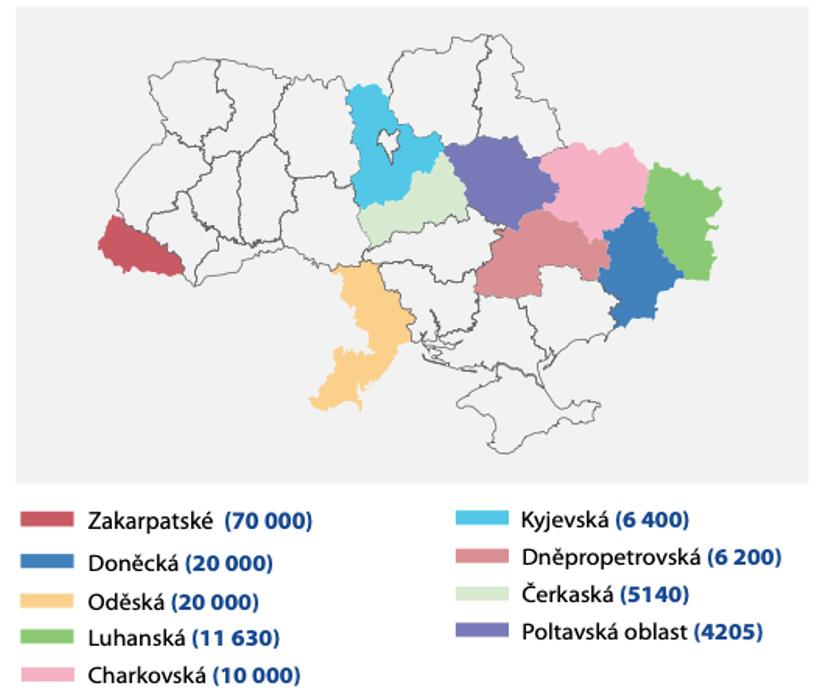
These factors are compounded by distinctions between Roma communities in Ukraine and within the communities in light of the regional context, social status, residence in the city, village or temporary settlements, cultural and religious differences. Key challenges include all form of ethnic/racial discrimination; adult illiteracy and children’s lack of access to education; lack of housing due to decentralisation (including issuing title deeds to housing and land plots); low employment rate (exacerbated by the pandemic), poverty and the resulting financial difficulties and increased social tension; lack of access to healthcare; lack of ID. The above factors are compounded by distinctions within and between the various Romani communities across Ukraine based on regional context, social status, residence (i.e., urban/rural areas, temporary settlements), as well as cultural and religious differences (i.e., Christian and Muslim Roma).
Over the course of 2018, mob attacks by the neo-Nazi group C-14 and the far right escalated dramatically, targeting Romani families, homes, and entire communities. The attacks destroyed property, injured many, and killed at least one.
From April 2018, the Roma Coalition reported eight attacks against Roma settlements in Ukraine, and more than 150 people fell victim to these attacks. On October 17, 2021, around 50 far-right radicals, some carrying flaming torches, went door to door in the Ukrainian city of Irpin, near Kyiv, chanting hateful slogans and calling for violence against local Roma residents. The mob spray-painted hate speech comments on the fence of one Roma family’s house.
Discriminated against even during war
Romani and non-Romani Ukrainians have been fighting for their country side by side, momentarily putting aside the fact that anti-Romani racism – also termed antigypsyism or Romaphobia – is widespread and deeply-rooted in the wider region.
Russia launched the war in Ukraine on 24 February 2022. All Ukrainian men aged 18-60 are banned from leaving Ukraine and are encouraged to join the army. Indeed, many of them, including those of Romani heritage, have proudly defended the independence and sovereignty of their homeland (e.g., the nuclear plant in Zaporozhzhia). A group of Romani soldiers from Kherson even captured a tank belonging to the Russian aggressor. Romani and non-Romani Ukrainians have been fighting for their country side by side, momentarily putting aside the fact that anti-Romani racism – also termed antigypsyism or Romaphobia – is widespread and deeply-rooted in the wider region.
In the immediate wake of Russia’s launching its air and ground offensive against Ukraine, the small-size Czech Romani media outlet Romea began reporting on Roma-related aspects of the war.
Within a couple of days of the re-invasion being launched, it became clear that Romani refugees fleeing the country were among those groups who were being treated least favourably, in ways that amount to racial discrimination. Such discriminatory practices by various stakeholders mainly in the neighbouring states but also in the Ukraine (i.e., the case of mob lynching a group of Romani pickpockets in Lviv, which was exploited by Russia for the purpose of its propaganda) have been disproportionately targeting Ukrainians of colour, including Afro-Ukrainians and Ukrainian Roma, and international students of colour studying in Ukraine.
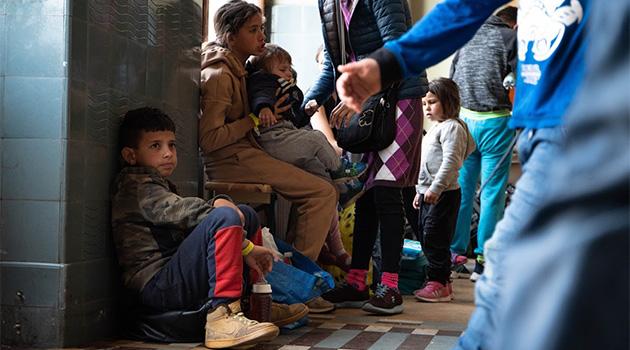
In the following weeks and months, national media outlets such and Romea reported instances of anti-Romani discrimination in the Slovak and Czech voluntary sector, including by Czech and Slovak politicians, as well by non-Romani representatives and administrators of refugee camps, tent towns and accommodation facilities, and by bus drivers and firefighters. The European Roma Rights Centre (ERRC) visited three refugee reception facilities in Moldova. They found that these facilities were ethnically segregated, crammed and used almost exclusively to accommodate Ukrainian Romani refugees (approximately 90%), including many children. The remainder consisted of other communities of colour, including refugees of Central Asian and African descent.
In addition to the trauma of the war, Ukraine’s estimated 400 000 Roma face discrimination along the evacuation route. The coverage also included statements of support for Ukraine, pleas to Putin by domestic and international organisations to end the war in Ukraine, requests for humanitarian aid and financial donations, but also reports on the agency of Ukrainian Roma during the war.
Annexed by Russia: what’s next?
On Friday 30 September 2022, Russia annexed four occupied Ukrainian territories in breach of international law and multiple international conventions, including the UN Charter. While it’s too early to say how the annexation of these territories will impact on the already very difficult situation of Roma, it is reasonable to expect that Roma will continue to be the targets for all extremist movements, the military, militia and vigilante groups on both sides of the conflict.
If you happen to live in any of the neighbouring countries that have been receiving refugees from Ukraine and have a large or empty property, please consider housing Ukrainian Romani refugees.
Otherwise, if you have financial capacity, please contribute to this Roma-specific fundraising initiative.